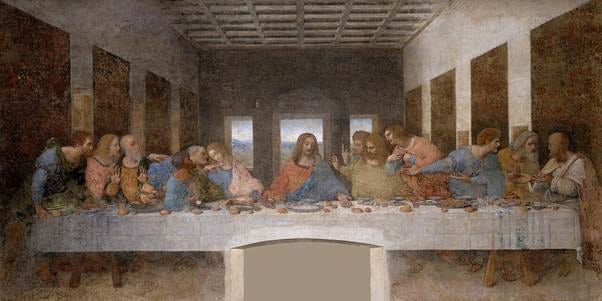Revealing the Hidden Gnostic Narrative in Leonardo’s Last Supper
For centuries, Leonardo da Vinci’s The Last Supper has been revered as a masterful depiction of biblical betrayal, capturing the moment Jesus reveals Judas as his traitor among the disciples. But what if this iconic fresco conceals a forbidden Gnostic narrative, where Mary Magdalene emerges as the true bearer of divine wisdom, Judas as an enlightened ally, and Peter as the real betrayer of spiritual truth?
For over five centuries, Leonardo da Vinci’s The Last Supper has been interpreted as a dramatic moment frozen in time. The instant when Jesus announces that one of his disciples will betray him. Judas Iscariot, traditionally identified as the villain of Christian history, has been cast as the central antagonist in this sacred drama.
But what if we’ve been reading the masterpiece wrong all along? What if Leonardo, one of the most brilliant minds of the Renaissance, encoded an entirely different story within the gestures, gazes, and spatial arrangements of his monumental fresco?
Recent iconographic analysis suggests that The Last Supper may not illustrate the canonical gospels at all. Instead, the painting appears to dramatize passages from the Gnostic gospels discovered in Egypt, particularly those attributed to Mary Magdalene and Philip. These ancient texts, suppressed by early Church authorities and rediscovered in 1945 near Nag Hammadi, present a radically different version of early Christianity: one centered on inner spiritual knowledge (gnosis) and the pivotal role of Mary Magdalene as the primary recipient of Christ’s secret teachings.
This alternative reading transforms our understanding of Leonardo’s work from a simple biblical scene into a bold visual denunciation—a coded message about the suppression of spiritual wisdom and the rise of institutional dogma.
Keep reading with a 7-day free trial
Subscribe to Ancient Origins UNLEASHED to keep reading this post and get 7 days of free access to the full post archives.


